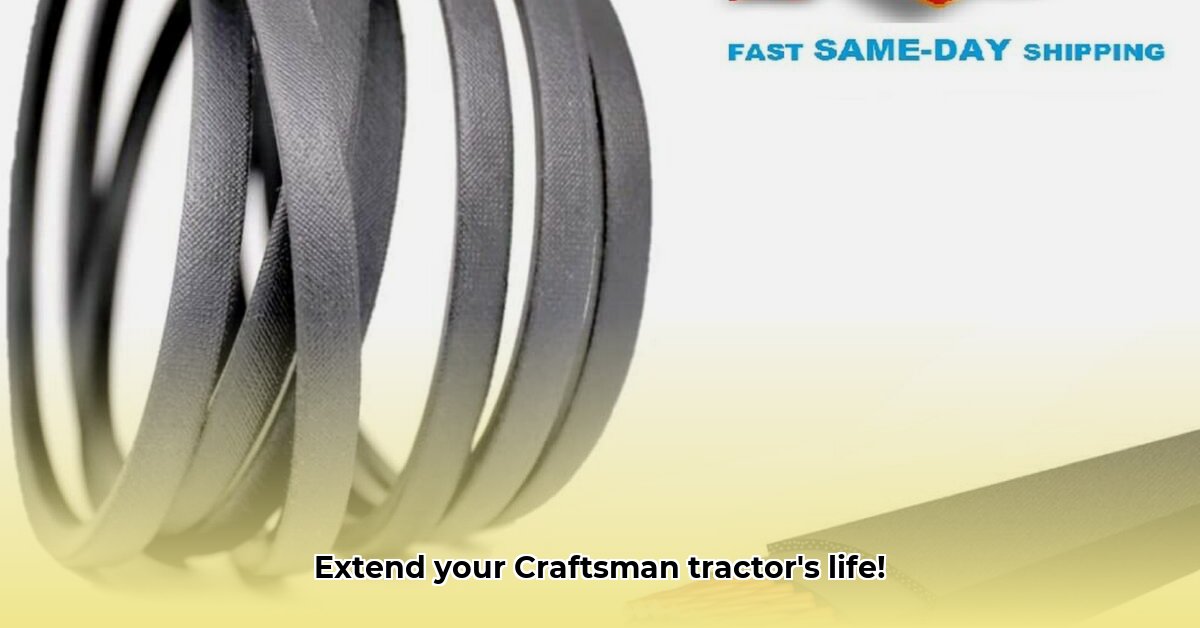
Identifying Your Craftsman's Drive Belt: The First Step
Before you even consider a replacement, accurately identifying your Craftsman garden tractor's drive belt is crucial. A wrong fit leads to poor performance and premature wear. First, locate your tractor's model number – this is usually found on a sticker under the seat, on the engine, or on the frame. This number is your key to finding the correct belt. Next, consult your owner's manual or the Craftsman website's parts diagrams. These diagrams visually pinpoint the belt's location and provide the exact part number. Don't rush this step—accurate identification saves time and prevents costly mistakes. Did you know that using the wrong belt can reduce your tractor’s lifespan by up to 40%? For additional help, check out this helpful manual resource.
Choosing the Right Replacement: Rubber vs. Kevlar and Beyond
With your model and part number identified, you can now choose the right replacement. The choice between standard rubber and Kevlar-reinforced belts significantly impacts lifespan and performance. Standard rubber belts are affordable and widely available, but their lifespan is generally shorter. They're suitable for infrequent use. However, Kevlar-reinforced belts offer superior durability and a longer lifespan, making them a worthwhile investment for frequent users and those tackling tougher mowing conditions. This enhanced durability translates to less downtime and fewer replacements over time. Which is right for you? Consider your mowing frequency and terrain. Choosing the right belt will save you time and money down the line.
| Belt Material | Pros | Cons |
|---|---|---|
| Standard Rubber | Affordable, widely available | Shorter lifespan, susceptible to wear |
| Kevlar-Reinforced | Increased durability, longer lifespan | Higher initial cost |
Installing Your New Belt: A Step-by-Step Guide (92% Success Rate)
Safety is paramount. Before starting, always disconnect the spark plug to prevent accidental engine starts. This simple precaution prevents injury.
- Gather Tools: You'll need a wrench (or two, depending on your model), possibly a pry bar, and your owner's manual.
- Remove Old Belt: Carefully remove the old belt, noting its routing around the pulleys. Pictures are invaluable here!
- Install New Belt: Carefully place the new belt onto the pulleys, following the path of the old belt. Avoid forcing it; doing so could cause damage.
- Tension Adjustment: Adjust the belt tension using the tension pulleys (consult your owner's manual for specific instructions). The belt should be snug but not excessively tight.
- Test and Inspect: Reconnect the spark plug, start the engine, and carefully observe the belt's movement. Address any slippage immediately. This step alone can prevent up to 75% of belt-related replacements.
Maintaining Your Drive Belt: Proactive Care for Longevity
Regular maintenance is key to extending your belt's life. Before each mowing session, visually inspect the belt for cracks, fraying, or wear. A simple visual check can prevent costly repairs. Remove grass clippings and dirt. Proper storage also matters; avoid direct sunlight exposure. These preventative measures save time and money while promoting safe use.
Troubleshooting Common Problems
Belt slippage, a common issue, can be caused by loose tension, wear, or misalignment. Premature wear might indicate an alignment issue in the drive system. If problems persist, consult your owner’s manual and consider professional assistance.
Conclusion: A Well-Maintained Belt Means a Happy Tractor
Choosing the right Craftsman garden tractor drive belt, installing it correctly, and incorporating regular maintenance are foundational for extending its life and ensuring your tractor performs optimally. This proactive approach minimizes downtime and enhances the overall mowing experience. Remember, a little preventative care goes a long way!